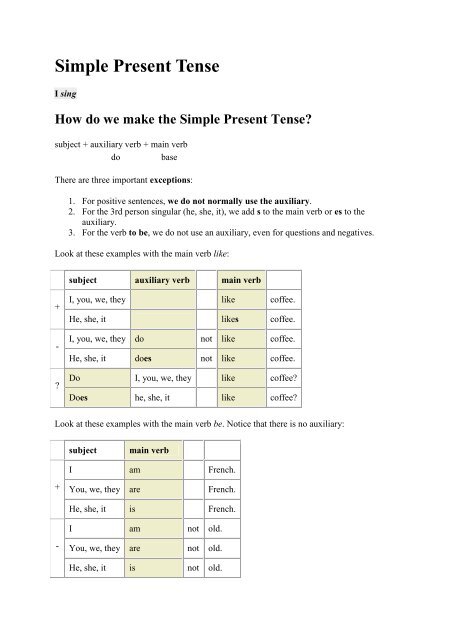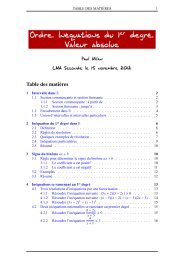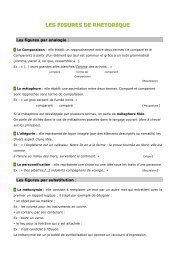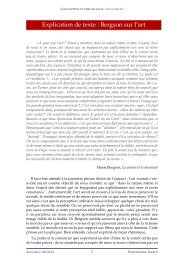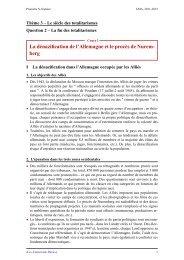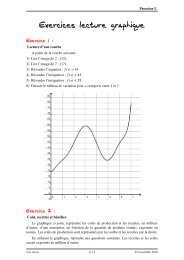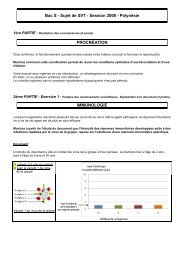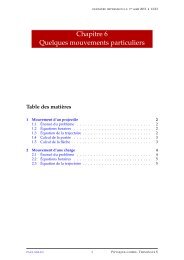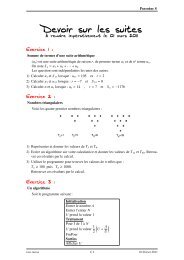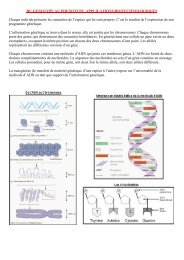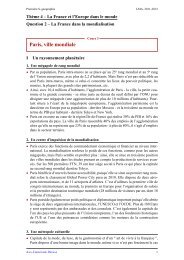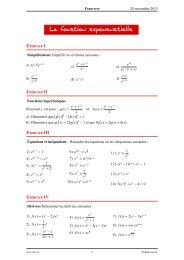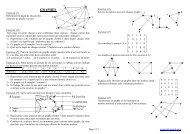Create successful ePaper yourself
Turn your PDF publications into a flip-book with our unique Google optimized e-Paper software.
<strong>Simple</strong> <strong>Present</strong> <strong>Tense</strong>I sing<strong>How</strong> <strong>do</strong> <strong>we</strong> <strong>make</strong> <strong>the</strong> <strong>Simple</strong> <strong>Present</strong> <strong>Tense</strong>?subject + auxiliary verb + main verb<strong>do</strong> baseThere are three important exceptions:1. For positive sentences, <strong>we</strong> <strong>do</strong> not normally use <strong>the</strong> auxiliary.2. For <strong>the</strong> 3rd person singular (he, she, it), <strong>we</strong> add s to <strong>the</strong> main verb or es to <strong>the</strong>auxiliary.3. For <strong>the</strong> verb to be, <strong>we</strong> <strong>do</strong> not use an auxiliary, even for questions and negatives.Look at <strong>the</strong>se examples with <strong>the</strong> main verb like:subject auxiliary verb main verb+-?I, you, <strong>we</strong>, <strong>the</strong>y like coffee.He, she, it likes coffee.I, you, <strong>we</strong>, <strong>the</strong>y <strong>do</strong> not like coffee.He, she, it <strong>do</strong>es not like coffee.Do I, you, <strong>we</strong>, <strong>the</strong>y like coffee?Does he, she, it like coffee?Look at <strong>the</strong>se examples with <strong>the</strong> main verb be. Notice that <strong>the</strong>re is no auxiliary:subjectmain verbI am French.+You, <strong>we</strong>, <strong>the</strong>y are French.He, she, it is French.I am not old.-You, <strong>we</strong>, <strong>the</strong>y are not old.He, she, it is not old.
Am I late??Are you, <strong>we</strong>, <strong>the</strong>y late?Is he, she, it late?<strong>How</strong> <strong>do</strong> <strong>we</strong> use <strong>the</strong> <strong>Simple</strong> <strong>Present</strong> <strong>Tense</strong>?We use <strong>the</strong> simple present tense when:• <strong>the</strong> action is general• <strong>the</strong> action happens all <strong>the</strong> time, or habitually, in <strong>the</strong> past, present and future• <strong>the</strong> action is not only happening now• <strong>the</strong> statement is always trueJohn drives a taxi.past present futureIt is John's job to drive a taxi. He <strong>do</strong>es it every day. Past, present and future.Look at <strong>the</strong>se examples:• I live in New York.• The Moon goes round <strong>the</strong> Earth.• John drives a taxi.• He <strong>do</strong>es not drive a bus.• We meet every Thursday.• We <strong>do</strong> not work at night.• Do you play football?Note that with <strong>the</strong> verb to be, <strong>we</strong> can also use <strong>the</strong> simple present tense for situations that arenot general. We can use <strong>the</strong> simple present tense to talk about now. Look at <strong>the</strong>se examplesof <strong>the</strong> verb "to be" in <strong>the</strong> simple present tense - some of <strong>the</strong>m are general, some of <strong>the</strong>m arenow:Am I right?Tara is not at home.You are happy.past present futureThe situation is now.
I am not fat.Why are you so beautiful?Ram is tall.past present futureThe situation is general. Past, present and future.


